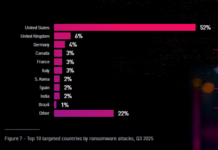
Imagine a world where enterprises can spin up secure, high-speed connectivity across data centers, edge devices, remote sites and cloud applications at the tap of a button. In 2025, the Global Connectivity as a Service (CaaS) Market is fast becoming the backbone of modern IT infrastructure. As businesses adopt hybrid cloud models, remote work, and IoT deployments, the need for agile, scalable and secure network connectivity is driving massive demand.
According to DataM Intelligence, the Global CaaS Market reached US$ 33.40 billion in 2024 and is expected to grow to US$ 280.42 billion by 2033, with a CAGR of 26.7% from 2025 to 2033.
From Fixed Networks to On-Demand Connectivity
Traditional fixed WANs and VPNs are no longer enough. Companies are shifting towards on-demand, cloud-based connectivity solutions like SD-WAN, virtual private networks, and dynamic private networks. This evolution supports distributed workforces, global supply chains, and real-time data flows, enabling enterprises to respond faster to business needs and reduce latency and inefficiencies tied to legacy network setups.
5G, Edge Computing & Infrastructure Investments Powering Growth
A major accelerator for the CaaS market is the convergence of 5G and edge computing technologies. These provide ultra-low latency and localized compute power, allowing sensitive applications such as industrial automation, real-time analytics, and autonomous operations to function reliably close to the edge. Alongside this, governments and private operators are investing heavily in cloud interconnects, subsea cables, private 5G networks, and data center edge infrastructure, all of which amplify the capability and reach of CaaS offerings.
Demand for Secure, Multi-Cloud & Hybrid Deployment Models
Security, flexibility, and scalability are top priorities. Enterprises prefer hybrid and multi-cloud setups where connectivity services seamlessly integrate across public, private, and edge clouds. As data traverses multiple environments, providers are being pressured to embed advanced security, zero-trust architectures, and compliance capabilities directly into CaaS solutions. This ensures that connectivity isn’t just fast and reliable but also secure.
Regional Dynamics: North America Leads, Asia-Pacific Surges
North America currently holds a leading share of the CaaS market, driven by mature cloud ecosystems, enterprise demand, and regulatory frameworks that favor robust, secure network solutions. However, Asia-Pacific is emerging as the fastest growing region. Rising demand in countries like India, China, and Southeast Asia, fueled by digital infrastructure projects, smart city initiatives, and enterprise digitization, is pushing CaaS adoption upward rapidly. Regional players are innovating localized connectivity solutions to address latency, regulatory, and infrastructure challenges.
Challenges & What Lies Ahead
Despite impressive growth, the CaaS market faces several challenges. Concerns around data sovereignty and cross-border compliance are significant as enterprises demand global connectivity that respects local laws. Ensuring consistent performance and reliability across distributed networks and diverse geographies remains complex. Additionally, cost of deployment, interoperability of infrastructure, and the need for standardization are obstacles that providers must overcome.
Conclusion
In 2025, the Global Connectivity as a Service (CaaS) Market is not just growing rapidly it’s reshaping how enterprises think about networking and infrastructure. On-demand connectivity, edge and 5G investments, multi-cloud models, and heightened security requirements are aligning to elevate CaaS from a convenience to a critical component in digital transformation strategies. Companies that build flexible, secure, and globally scalable connectivity solutions will be those that succeed in enabling the seamless, connected enterprises of the future.

















